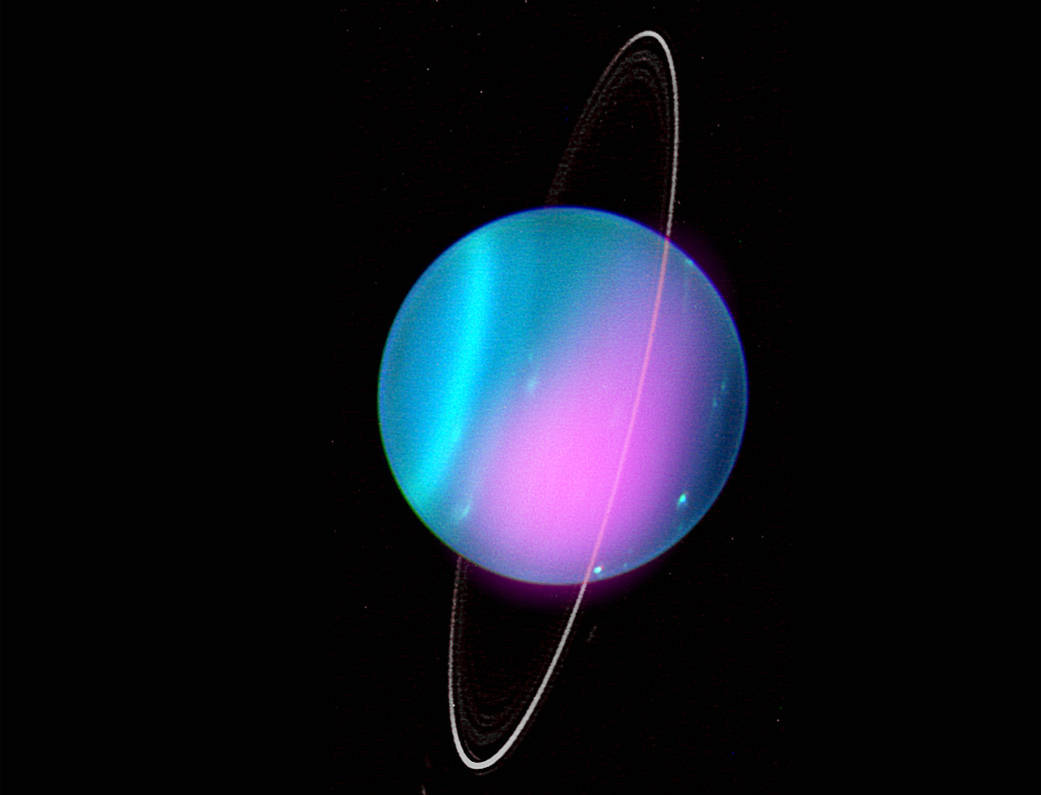Mysterious X-rays are flaring out of Uranus
Uranus is always full of surprises.

For the first time, astronomers have detected mysterious X-rays flaring out of Uranus.
How is this happening? According to NASA scientists, Uranus is so massive that it could just be scattering X-rays given off by the sun more than a billion miles away. Or, perhaps the fine rings of dust surrounding Uranus are generating their own radiation through some unknown process. A closer study of Uranus is required to know for sure.
Uranus is cold, windy and made almost entirely of ice and gas. Even though it's enormous (with a diameter about four times Earth's), Uranus is difficult to study in depth. Only one spacecraft — NASA's Voyager 2 — has ever made the perilous journey to the planet, forcing scientists to rely mostly on telescope observations much closer to Earth in order to study the ice giant.
In a new study published March 31 in the journal JGR Space Physics, astronomers looked at some archival observations of Uranus taken by NASA's Chandra X-Ray Observatory, an orbiting telescope that scours the universe for sources of X-ray radiation.
According to NASA, X-rays are emitted when matter is heated to millions of degrees, like when stars explode or when matter swirls around the edge of a black hole at near light speed. Until recently, X-ray emissions had been detected from every planet in the solar system except Uranus and Neptune. In most cases, these emissions occur when X-rays created by the sun crash into atoms in a planet's atmosphere, scattering the light back into space.
In the new study, researchers looked at Chandra data taken from Uranus in 2002 and 2017, and saw clear evidence of X-ray emissions in both years. Several of these emissions had a brightness consistent with solar X-rays being scattered back outward, the researchers wrote. However, in the 2017 observations, the team detected a possible "flare" of X-rays, where the brightness of emissions around Uranus increased four times from one day to the next.
According to the researchers, "this may be indicative of additional X‐ray emission processes at Uranus," besides mere solar scattering.
Sign up for the Live Science daily newsletter now
Get the world’s most fascinating discoveries delivered straight to your inbox.
What mysterious phenomenon could be generating the X-rays from Uranus? One possibility lies in the planet's rings. According to the researchers, the environment around Uranus is rich in charged particles such as protons and electrons; these particles could be colliding into the planet's rings, producing X-rays in the process. (A similar phenomenon has been observed in Saturn's rings, the team wrote.)
It's also possible that the X-rays are the result of some sort of auroral process, in which charged particles from the sun are colliding with Uranus' magnetic-field lines and causing a distinct glow. However, further observations are required to flesh out this hypothesis. For now, the X-ray lights of Uranus remain a mystery.
Originally published on Live Science.

Brandon is the space/physics editor at Live Science. His writing has appeared in The Washington Post, Reader's Digest, CBS.com, the Richard Dawkins Foundation website and other outlets. He holds a bachelor's degree in creative writing from the University of Arizona, with minors in journalism and media arts. He enjoys writing most about space, geoscience and the mysteries of the universe.









